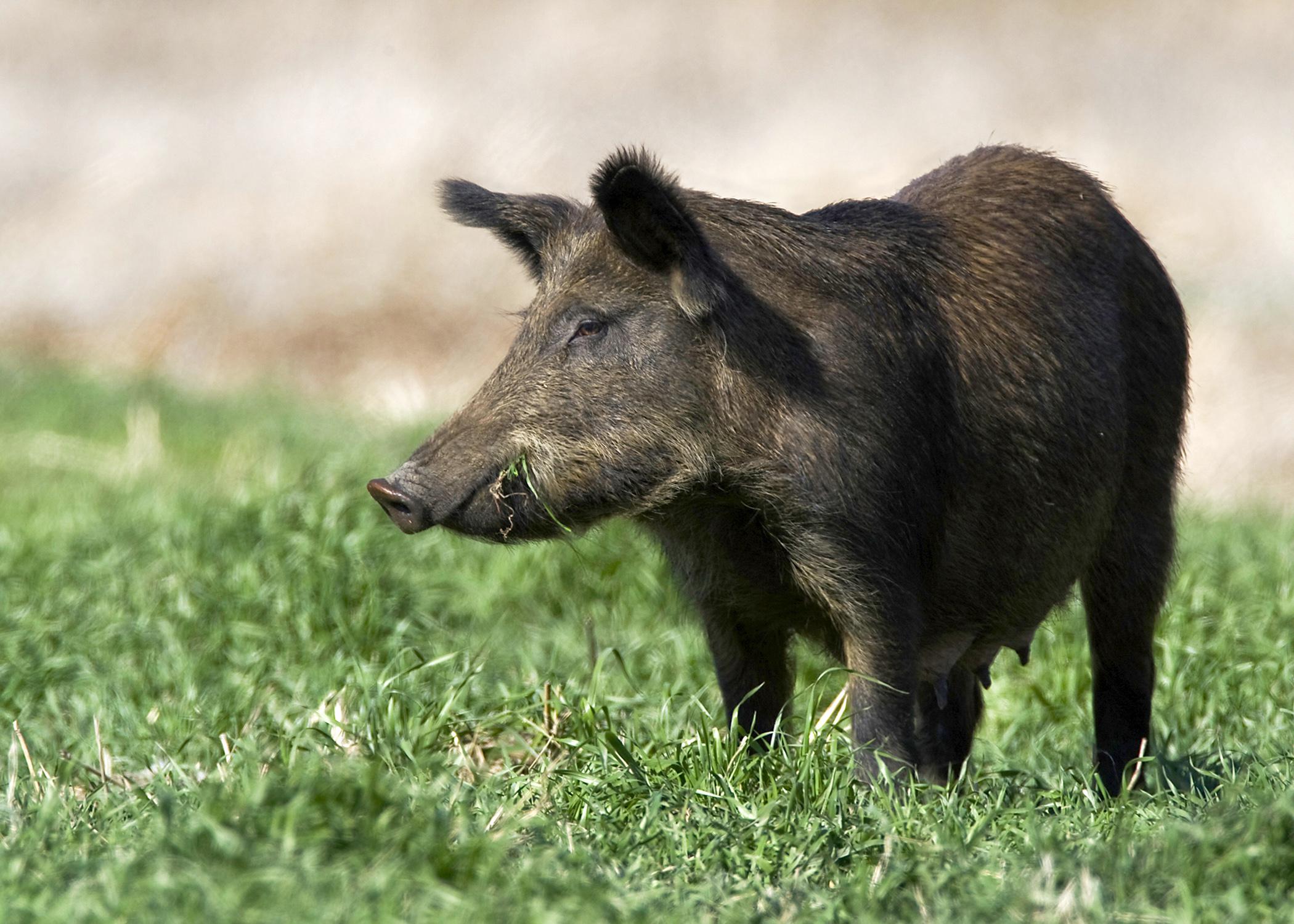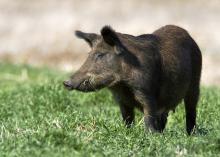Information Possibly Outdated
The information presented on this page was originally released on November 7, 2014. It may not be outdated, but please search our site for more current information. If you plan to quote or reference this information in a publication, please check with the Extension specialist or author before proceeding.
Wild hogs are more than a mere nuisance
MISSISSIPPI STATE -- Wild hogs are a nuisance and potential danger to farmers and landowners throughout the United States. Brought to the Americas by early Spanish explorers as a livestock animal and later transported by hunting enthusiasts, wild hogs have spread rapidly throughout the Southeast.
One reason wild hogs are a growing problem is they can adapt quickly to a variety of temperatures, climates and conditions. They also reproduce rapidly and have few, if any, effective predators, other than humans.
Wild hogs are opportunistic omnivores, although they prefer eating plant material. But they will also eat invertebrates, such as worms; insects and larvae; small mammals; and the eggs and young of native ground-nesting birds and reptiles.
The most obvious sign of the presence of wild hogs on your property is damage to crops, fields, trees or soil. Hogs dig up soil when rooting for food and wallow in wet soil to cool off.
Since 2000, wild hog sightings have become more frequent in urban and suburban spaces across the U.S. Wild hog damage is often seen on grassy areas, such as lawns, parks, golf courses, cemeteries and levees. This rooting not only damages the turfgrass, but contributes to erosion, slope destabilization and sedimentation. Underground pipes for irrigation systems also may be damaged in the process.
Wild hogs present additional problems in urban areas. Vehicle collisions with wild hogs may result in property damage and personal injury to drivers and passengers. When surprised or threatened by people or their pets, wild hogs can be aggressive and may attack.
Wild hogs can transmit diseases such as brucellosis, E. coli bacteria and pseudorabies -- just to name a few -- to humans, pets, livestock and wildlife. Wild hogs that wallow, defecate and urinate in water supply reservoirs, irrigation waters, ponds or streams can make these water sources temporarily unusable.
Humans can catch diseases from wild hogs when they handle hog carcasses. Always wear disposable gloves to prevent exposure to bacteria. Cook wild hog meat to 160 degrees.
Managing wild hogs in an urban setting comes with unique challenges.
Because of the proximity to humans and pets in urban areas, shooting or hunting with dogs are not always feasible options. Often, the only available controls are trapping and exclusion methods, such as fencing.
Additionally, the efforts of wildlife and law enforcement officials to control wild hogs are sometimes complicated by the public’s perception that these animals are tame or harmless. Well-meaning individuals who feed wild hogs can exacerbate the problem by habituating them to humans.
The Mississippi State University Extension Service is currently working with farmers and landowners to quantify the economic impact of wild hog damage in the state. They are also investigating the public’s perception and knowledge of wild hogs. Future research will involve quantifying wild hog damage to public lands as well as damage resulting from human-hog interactions in urban areas.
Knowing that wild hogs are a growing concern in Mississippi and avoiding behaviors that encourage them from coming to your land or your neighborhood are critical to the long-term management and control of these animal pests. For more information about wild hogs, visit http://wildpiginfo.com.

Editor’s Note: Extension Outdoors is a column authored by several different experts in the Mississippi State University Extension Service.





